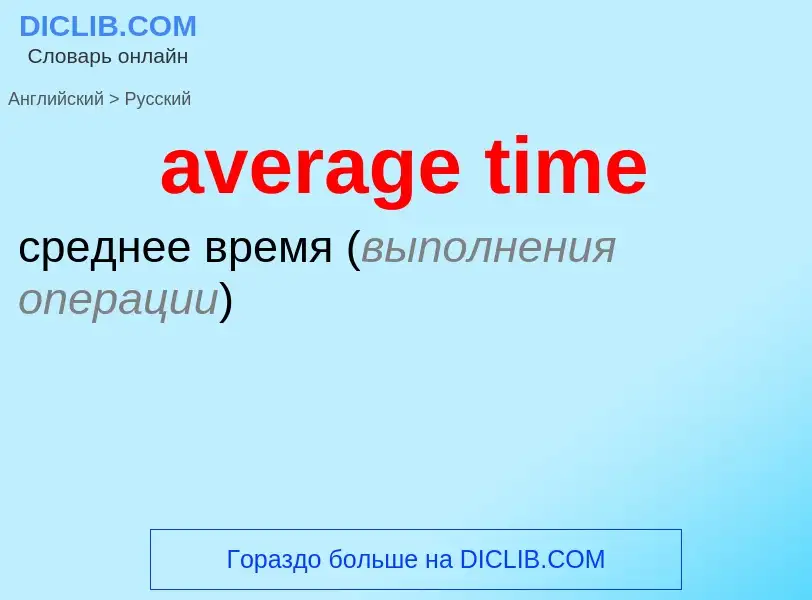Перевод и анализ слов искусственным интеллектом ChatGPT
На этой странице Вы можете получить подробный анализ слова или словосочетания, произведенный с помощью лучшей на сегодняшний день технологии искусственного интеллекта:
- как употребляется слово
- частота употребления
- используется оно чаще в устной или письменной речи
- варианты перевода слова
- примеры употребления (несколько фраз с переводом)
- этимология
average time - перевод на русский
общая лексика
среднее по времени
общая лексика
осреднение по времени
общая лексика
скользящая средняя
метод скользящей средней
сокращение
MA
статистика
(метод сглаживания какого-либо показателя на некотором промежутке времени)
скользящее среднее (наиболее часто используемый индикатор в техническом анализе, линию скользящего среднего откладывают прямо на графике движения цены; считается с некоторым заранее заданным периодом: чем меньше период, тем больше вероятность ложных сигналов, чем больше период, тем слабее чувствительность скользящего среднего; существует пять распространенных типов скользящих средних: простое (его также называют арифметическим), экспоненциальное, треугольное, переменное и взвешенное)
синоним
Смотрите также
математика
скользящее среднее
Википедия
In statistics, a moving average (rolling average or running average) is a calculation to analyze data points by creating a series of averages of different selections of the full data set. It is also called a moving mean (MM) or rolling mean and is a type of finite impulse response filter. Variations include: simple, cumulative, or weighted forms (described below).
Given a series of numbers and a fixed subset size, the first element of the moving average is obtained by taking the average of the initial fixed subset of the number series. Then the subset is modified by "shifting forward"; that is, excluding the first number of the series and including the next value in the subset.
A moving average is commonly used with time series data to smooth out short-term fluctuations and highlight longer-term trends or cycles. The threshold between short-term and long-term depends on the application, and the parameters of the moving average will be set accordingly. It is also used in economics to examine gross domestic product, employment or other macroeconomic time series. Mathematically, a moving average is a type of convolution and so it can be viewed as an example of a low-pass filter used in signal processing. When used with non-time series data, a moving average filters higher frequency components without any specific connection to time, although typically some kind of ordering is implied. Viewed simplistically it can be regarded as smoothing the data.

